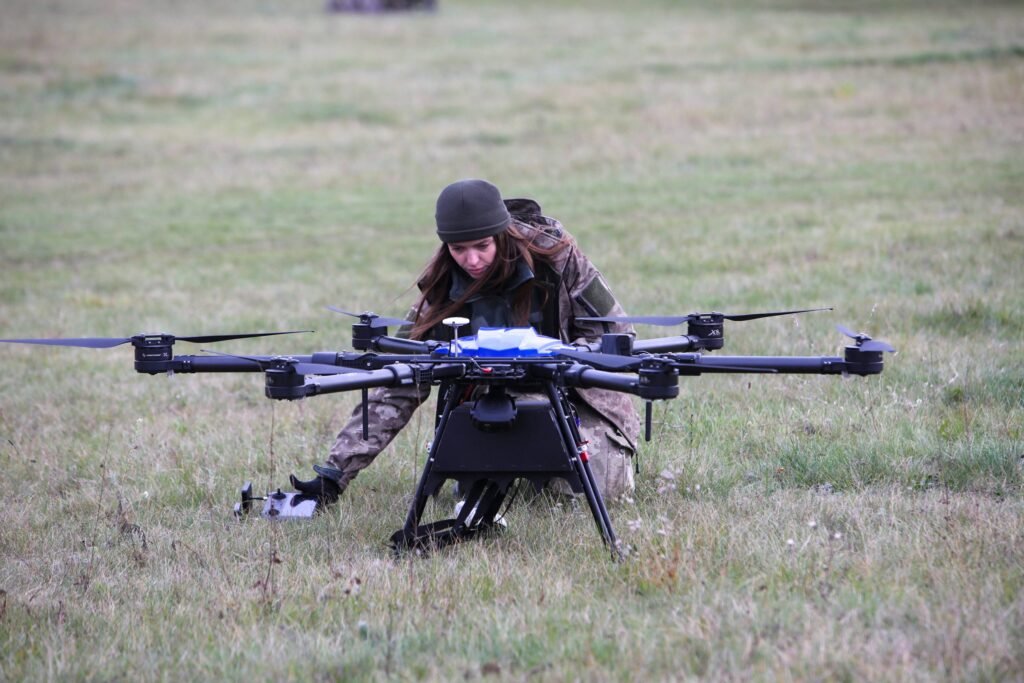The war in Ukraine became a testing ground for the introduction of civilian high-tech technology. Europe should take note.
Commercial drones are reused. Spy by private satellite. Volunteer hackers provide essential cyber defense for Ukraine.
Ukraine is using these private sector technologies to strengthen its military. Its success would be an opportunity for Europe to strengthen its financially strapped defense industry.
The new European Commission has made this issue a top priority. The post of Secretary of Defense was created with the aim of revitalizing the European Armed Forces. Although funding is tight and there is a risk of duplication with NATO efforts (outgoing NATO chief Jens Stoltenberg has warned about creating a “competitive edge”), the continent is struggling to streamline its arms industry and We can and should expand. Ukraine’s experience will be key.
The European Investment Bank recently removed an important hurdle by allowing financing for defense companies. It plans to invest 8 billion euros in defense. But the most important military innovations may not come from traditional investments in the traditional defense industry. They may have emerged from the application of civilian high technology on the battlefield in Ukraine. As Europe modernizes its military, it must pay close attention to how civilian technologies are transforming warfare in three areas: drones, satellites, and cyber.
drone
The war in Ukraine highlights the importance of drones. Small commercial drones enable reconnaissance with maximum visibility of enemy positions and movements on land down to the infantry level. Ukraine has repurposed commercial drones into kamikaze missiles.
Hundreds of small drone factories have sprung up in Ukraine. More than 90% of drones used on the battlefield are produced domestically.
Drones are cheap and adaptable. Easily upgradeable without requiring billions of dollars of investment. Ukraine is repurposing off-the-shelf drones, allowing them to fly hundreds of miles and strike targets deep inside Russia. Ukraine has learned how to deploy drones against naval targets. As for defense, it has successfully built electronic defenses to thwart Russian drones.
However, Ukraine lacks the capacity to expand production. Europe should invest in and collaborate with Ukrainian civilian drone innovators. This helps ensure the military is able to adapt to the latest and most effective technology. Ukraine has said it could double its drone production to 2 million a year if provided with additional financial support. The EU should seize the opportunity.
Get the latest information
Sign up to receive periodic bandwidth emails and stay up to date on CEPA initiatives.
satellite
Ukraine has adapted civilian satellites to ground warfare. Through a crowdfunding campaign organized by civil society, they acquired microsatellites from the Finnish company ICEYE that will allow them to spy on Russia’s logistics activities and the location of its troops, ships and tanks without being obstructed by clouds or foliage.
In addition to the information provided by allied satellites, Ukraine is leveraging the growing field of expertise of private satellite startups. Some people are monitoring climate change. Some focus on improving agriculture. Their data is now helping to power the Ukrainian military.
Ukraine will emerge from the war with experience in how to integrate near real-time information from commercial satellites. Europe should take advantage of Ukraine’s knowledge. The partnership could help the continent, which notoriously lags both the United States and Russia in military satellites, catch up.
cyber war
After Russia invaded in 2022, Ukraine established the IT Army, an international volunteer force to disrupt Russia’s economy by blocking government services, infrastructure, and private businesses. Ukraine’s IT Army consists of two parts. One is a distributed denial-of-service component that provides volunteers around the world with the tools and knowledge they need to participate in a centrally managed effort, and the other is a distributed denial-of-service component that provides a hand-picked group of highly skilled volunteers. We are a dedicated in-house team that hires. Execute complex cyber operations around the world.
These are important lessons. An effective IT army cannot operate as just a bunch of random volunteers. It requires a functioning organizational structure. We need to mobilize and manage connections to the broader cyber and information ecosystem, both domestically and internationally. It is difficult to navigate the gray areas between public and private, and between civilian and military. Ukraine offers valuable lessons.
Europe should seize the opportunity to partner with Ukraine. Joint procurement of dual-use technology should be pursued. Ukraine was once called the breadbasket of Europe because of its vast agricultural resources. This war could potentially turn Ukraine into Europe’s defense technology basket.
Dr. Henrik Larsen is a non-resident fellow at the Center for European Policy Analysis (CEPA).
Bandwidth is CEPA’s online journal dedicated to promoting transatlantic cooperation on technology policy. All opinions are those of the authors and do not necessarily represent the positions or views of the institutions they represent or the Center for European Policy Analysis.
Read more from Bandwidth
CEPA’s online journal dedicated to promoting transatlantic cooperation on technology policy.
read more
Source link

